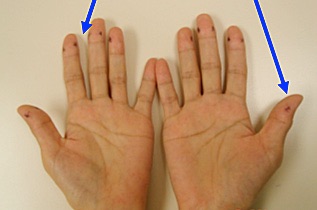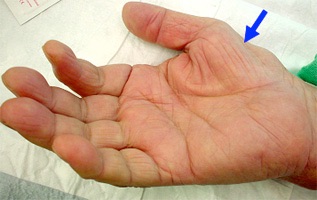Introduction
Anatomy
Cause
Symptoms
Diagnosis
Non-surgical treatment
Surgical treatment
Rehabilitation
Prevention
Introduction
Numbness in the hand and fingers is very common in the adult population. Carpal tunnel syndrome is one of the causes. It occurs frequently among housewives and office workers who use the computer mouse and keyboard for prolonged periods of time. Prevention and early treatment of carpal tunnel syndrome usually helps resolve the symptoms. Occasionally, surgery is necessary to relieve the compression of the nerve and the prognosis is good.
Anatomy
The carpal tunnel is a tunnel-like structure in the wrist made up of ligaments and wrist (carpal) bones. Within this tunnel are nine tendons and a median nerve. The median nerve travels from the forearm into the hand through this tunnel in the wrist, and is one of three major nerves responsible for supplying feeling in the hand.
Cause
Carpal tunnel syndrome is caused by the swelling of the tendons in the wrist, which puts excess pressure on the median nerve, leading to pain and numbness. The causes of the swelling of the tendons include repetitive stress injury during work, for example, through the prolonged usage of keyboard and mouse. Other causes include local inflammation, gouty arthritis and pregnancy. In rare cases, infections, such as tuberculosis, trauma or tumour, such as ganglion, can also cause compression of the median nerve at the carpal tunnel.
Symptoms
Symptoms include numbness and tingling sensation of the tips of thumb, index, middle and ring fingers. The symptom is more serious in nighttime. Sometimes the patient may even feel week when gripping things, which affects household work. To relieve pain, the patient would usually wave the hands rigorously.
At a more advanced stage of the condition, wasting of the thenar muscles right below the thumb would be noted, affecting the function of the thumb.
Women, pregnant women, patients of rheumatoid arthritis and diabetes and those who have had wrist fractures have a higher risk of having carpel tunnel syndrome.


Diagnosis
An orthopaedic specialist will ask you about the typical symptoms you experience and any possible predisposing risk factors that could have caused carpal tunnel syndrome. Physical examinations will be performed to confirm the clinical diagnosis. These include the Phalen test (a clinical test to demonstrate the compression of the nerve at the wrist), median nerve compression test and a clinical test involving the tapping of the nerve along the wrist to see if there are any tingling sensation of the fingers. Any muscle wasting, reduced sensation of the fingers and thumb as well as any reduced function of the thumb will be tested. More objective tests – electrophysiological studies including electromyography (EMG) and nerve conduction test (NCV) – can help to confirm the diagnosis.
Non-surgical treatment
Use an elastic or leather brace to keep the wrist in a neutral position
A corticosteroid injection into the carpel tunnel
Anti-inflammatory medication, such as ibuprofen
Surgical treatment
Surgery would be recommended if the non-surgical treatment methods are not effective, or if the symptoms are at an advanced stage so that the thenar muscles have degenerated, or if a tumor is suspected during a physical examination.
A carpel tunnel surgery usually involves partial anesthesia so the patient is allowed to go home the same day. During the surgery, the transverse carpel ligament will be cut, the carpel tunnel will be examined and the median nerve will be loosened. Nowadays, the surgery can be performed with an endoscope, so the wound is generally smaller and the recovery time faster. The sutures are usually removed one week after the procedure.
Rehabilitation
The surgical wound usually heals within two weeks. After the surgery, finger exercises are recommended to prevent scar formation and adhesions. More rigorous wrist movement is allowed after the wound has completely healed.
Prevention
There are no proven ways to prevent carpal tunnel syndrome but some general precautions may protect your wrists and hands:
• Stop any activities that may cause numbness of your hand and fingers.
• Relax your grip and avoid prolonged handwriting and typing.
• Take frequent breaks, for example, every 15 to 20 minutes to relax and do gentle stretching of the wrist and hand.
• At work, avoid bending the wrist all the way to its extreme range and keep it in the relaxed middle position, i.e. the position during writing.
• Avoid pressing or putting the wrist over a hard surface, such as the edge of a desk, when using the mouse or the keyboard.
Dr. NGAI, Wai-kit